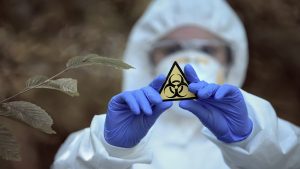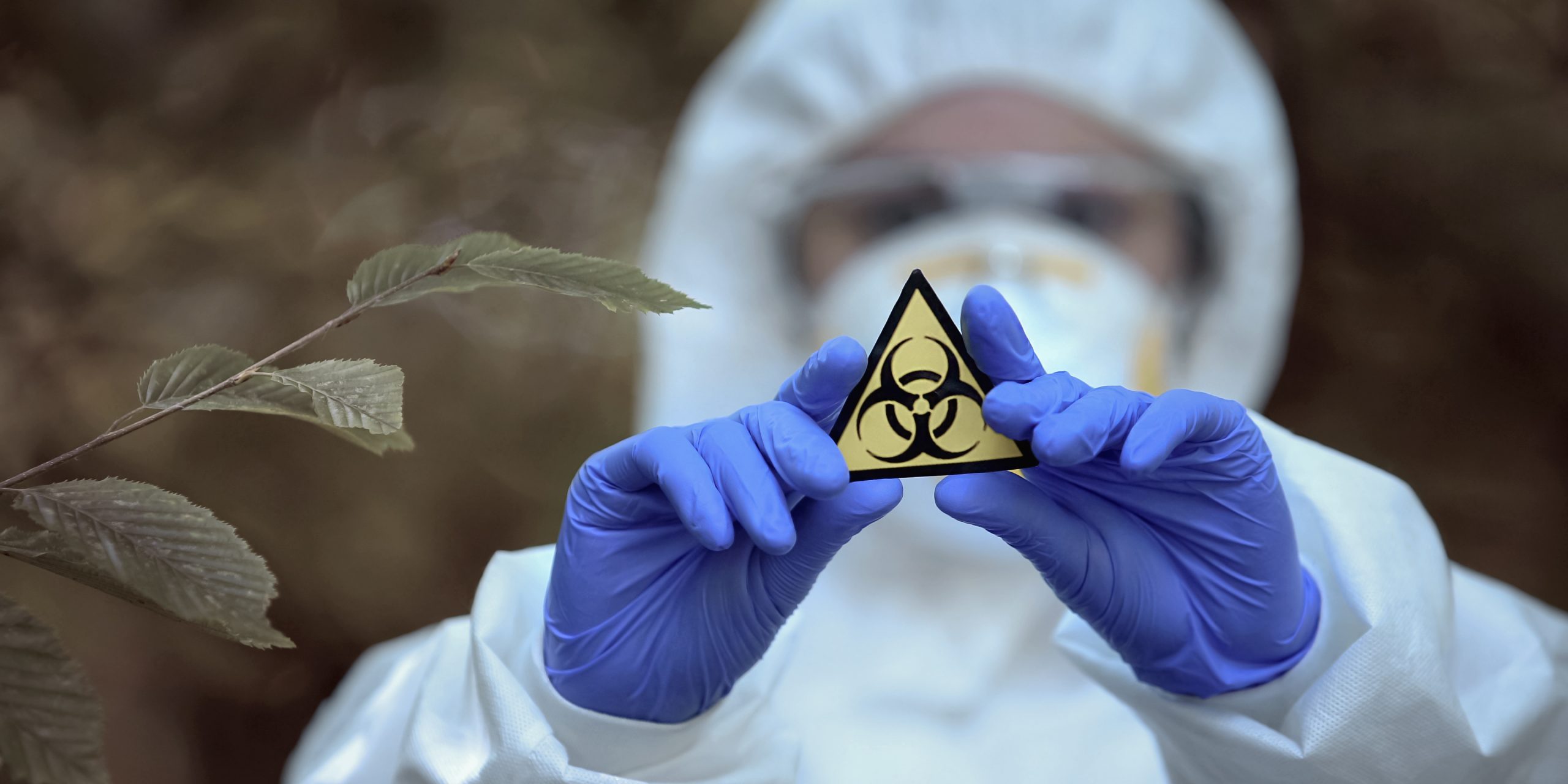 Advancements in manufacturing, pharmaceuticals, transportation, and technology have improved the quality of life for many in modern society, but these leaps forward often come at a cost.
Advancements in manufacturing, pharmaceuticals, transportation, and technology have improved the quality of life for many in modern society, but these leaps forward often come at a cost.
Rapidly changing technology allows for little understanding of possible long-term consequences to individuals and their environments as newer products replace predecessors ever more rapidly. While we enjoy eating fruits out of season, scrolling on our brand-new smartphones, and taking vacations all over the world, each of these activities has unseen consequences for the environments we live in.
The Problem with Measuring Environmental Toxins
Pursuing health and wellness has never been more in vogue, and tools to measure our steps, our sleep, our calories, and our heart rates abound. However, none of these helpful tools measures exposure to toxins in our environment. Nor do these tools capture the cumulative impact of the toxins we are exposed to each day.
For example, when a person eats a handful of grapes imported from Peru, what kind of pesticides, fuel residue, and other substances might be harbored in those delicious little gems, even after a thorough rinse?
Tools to measure our steps, our sleep, our calories, and our heart rates abound, but none of them measures exposure to toxins in our environment.
For the average person, exposure to one toxic thing here or there may not seem too significant, but in the complex world we now inhabit, can anyone say that they only encounter one or two toxins and on an infrequent basis?
The Dangers of Environmental Toxins
The human body is a wonder capable of filtering out many toxins and expelling waste for the overall well-being of the person. Unfortunately, society’s average exposure to harmful substances is increasingly outstripping the typical person’s ability to process and expel these toxins. Worse yet, some of the things we are often exposed to do not get properly removed by the regular functioning of the body’s systems.
How are modern people encountering so many toxins that their bodies are ill-equipped to filter, break down, and excrete? Exposure is occurring in so many ways that smart doctors are working with their patients to address current toxicity and reduce future exposure, with the understanding that it is likely impossible to completely eliminate exposure to all forms of environmental toxins.
What may cause significant symptoms in one person may cause little or no effects for another person with similar levels of exposure.
The toxins found in most humans include chemical, biological, and physical toxins found in the air, water, soil, food supply, and consumer products. Environmental toxins cause varying degrees of negative impact on human health, and what may cause significant symptoms in one person may cause little or no effects for another person with similar levels of exposure.
Many notable toxins may cause various symptoms in people exposed to them. Many of us would be quick to recognize the dangers posed by heavy metals, or the smog and smoke that are in the air, or things like asbestos. But we often fail to realize how prevalent these items are and what other toxins are impacting the patients we see.
When a person has persistent symptoms, it can be tempting to overlook environmental factors, but this is done to the detriment of the patient. It is incumbent upon a responsible practitioner to learn what symptoms may correlate with certain toxic exposures and learn how to look for evidence of these exposures.
Chemical Toxins in Our Environment
Chemical toxins in our environment may include heavy metals like lead, mercury, cadmium, or arsenic. Even non-medical professionals have likely heard of lead poisoning or know that arsenic is a dangerous poison. But as serious as heavy metal poisons are, they are better understood by the lay person than pesticide and herbicide toxins such as DDT, organophosphates, and atrazine.
Further, our environment includes certain volatile organic compounds (VOCs) often found in paint, cleaning products, and building materials and polychlorinated biphenyls (PCBs) and dioxins that persist from industrial byproducts. Additionally, we bring chemical toxins directly into our homes in the form of perfluoroalkyl and polyfluoroalkyl substances (PFAS) found in nonstick cookware, food packaging, and water-resistant products.
Symptoms that may result from exposure to chemical environmental toxins can vary in intensity. Often, those with repeated direct physical contact with chemical toxins may experience rash, redness, or skin irritation. Heavy metal poisoning has long been associated with neurological symptoms including headache, confusion, dizziness, seizures, and loss of consciousness.
We bring chemical toxins directly into our homes in the form of perfluoroalkyl and polyfluoroalkyl substances (PFAS) found in nonstick cookware, food packaging, and water-resistant products.
Other common symptoms of chemical toxicity include nausea, difficulty breathing, vomiting, muscle twitches, and changes in mental state. The severity of symptoms can be different even in people with identical exposure, and whether mild or serious in presentation, it is also common for symptoms to be delayed.
Toxins in Our Air
Air pollutants are increasingly unavoidable in our busy day-to-day lives, as breathing is important no matter who you are or where you live. While smog has been especially notable in highly populated areas, the prevalence of air pollution has spread beyond major cities. Small particulate from vehicle emissions, industrial processes, and wildfires permeates the air we breathe every day.
Ozone formed by reactions with nitrogen oxides (NOx) and VOCs, along with nitrogen oxides themselves and sulfur dioxide, both produced from the burning of fossil fuels, also lingers in the air. Additionally, the carbon monoxide from the incomplete combustion of fuel exists anywhere that vehicles are being driven. When the very air we breathe is laced with these potential hazards, it seems unlikely we can wholly avoid some exposure.
Small particulate from vehicle emissions, industrial processes, and wildfires permeates the air we breathe every day.
Unfortunately, the battle against polluted air will continue to rage, but as we see patients who are facing varying degrees of symptoms, what should we expect? Unsurprisingly, the leading symptoms of air pollution toxicity are primarily respiratory system-related. Those who suffer from asthma or chronic obstructive pulmonary disease often report increased symptoms of those issues. Even people without preexisting conditions may complain of throat irritation, difficulty breathing, coughing, wheezing, tightness in the chest, and irritation in the airways.
Other common symptoms stemming from air pollution include eye irritation, headache, dizziness, fatigue, and nausea. Those with heart conditions also seem to suffer higher rates of complications due to toxic air pollution.
Toxins in Our Water
Toxic pollution is not limited to land and air, of course, and any consideration of environmental toxins must include what we encounter in the water supply. Interestingly, the most common contamination in water is biological in nature—bacteria, viruses, and parasites—and can be considered somewhat separately from the toxins introduced by humans to water.
Toxins like microplastics, BPA, pesticides, and pharmaceuticals have all found their way into our water sources via poor waste management and rain runoff from agricultural land. Though most first-world countries treat their water for bacteria, viruses, and parasites, eliminating many of the other pollutants proves a bit harder. Microplastics, in particular, have become an increasing concern for medical professionals.
Toxins like microplastics, BPA, pesticides, and pharmaceuticals have all found their way into our water sources via poor waste management and rain runoff from agricultural land.
For most people, a clean and reliable water supply involves their municipal water district and is as close as the tap at the sink. But when there are BPAs and microplastics hiding in the water supply, it is increasingly common to see individuals coping with the symptoms of a disrupted endocrine system or trying to get a handle on inflammation and oxidative stress. Some contaminants may cause fertility difficulty, and others may contribute to organ failure.
Where to Look for Clues About Environmental Toxin Exposure
This seems to paint a dire picture for those seeking to promote their own personal health as well as the medical professionals seeking to help their patients achieve optimal health. While it is true that environmental toxins will continue to pose a risk to the happiness and health of the general population, it is easier to determine if these toxic exposures are a factor in a patient’s health concerns than you might think.
As a practitioner, you can be equipped to follow the clues that tell you how to help treat theses toxicities.
It is possible to learn what changes on a standard blood test may be giving you a clue to explore the possibility of toxic environmental exposures—without ordering exotic tests. And while the average person may not be able to describe everything that might be going on in their system in relation to the environment they are in—where they buy their food, where they work, how they spend their free time—you can be equipped to follow the clues that tell you how to help treat theses toxicities.
Environmental Medicine and Toxin Assessment Master Class
The founding president of Bastyr University, Dr. Joseph Pizzorno, is pioneering ways to understand and use the correlations between even small findings on a patient’s blood tests.
Using the most commonly ordered tests, such as the complete blood count (CBC), lipids, and the comprehensive metabolic panel (CMP), Dr. Pizzorno has had success helping patients to lower their total toxic load. A lower overall toxic load allows a patient and their doctor to proceed to treat any remaining health concerns without environmental toxicity obscuring the problem.
This revolutionary approach means having the ability to identify when toxic exposure may be causing or contributing to the health struggles of an individual with no unnecessary extra testing, screening, or wasted time—time that is precious to a patient moving toward greater health and wellness. Click here to learn more about and register for Dr. Pizzorno’s Environmental Medicine and Toxin Assessment Master Class.






